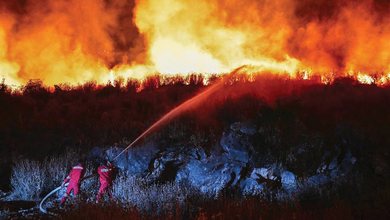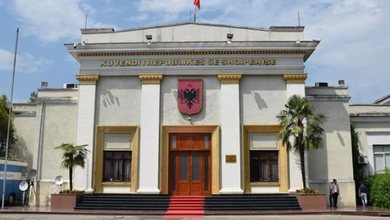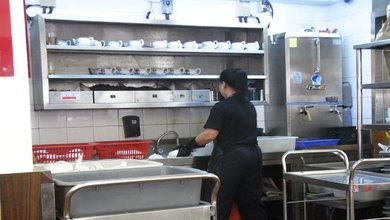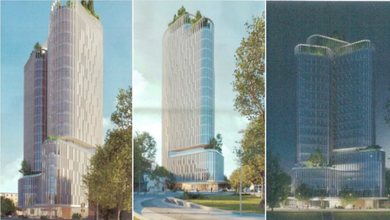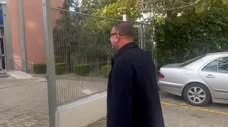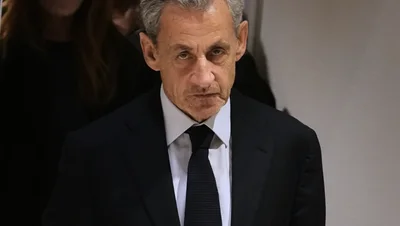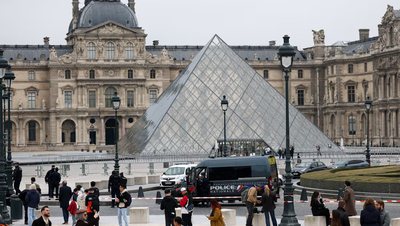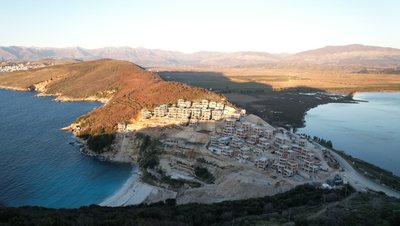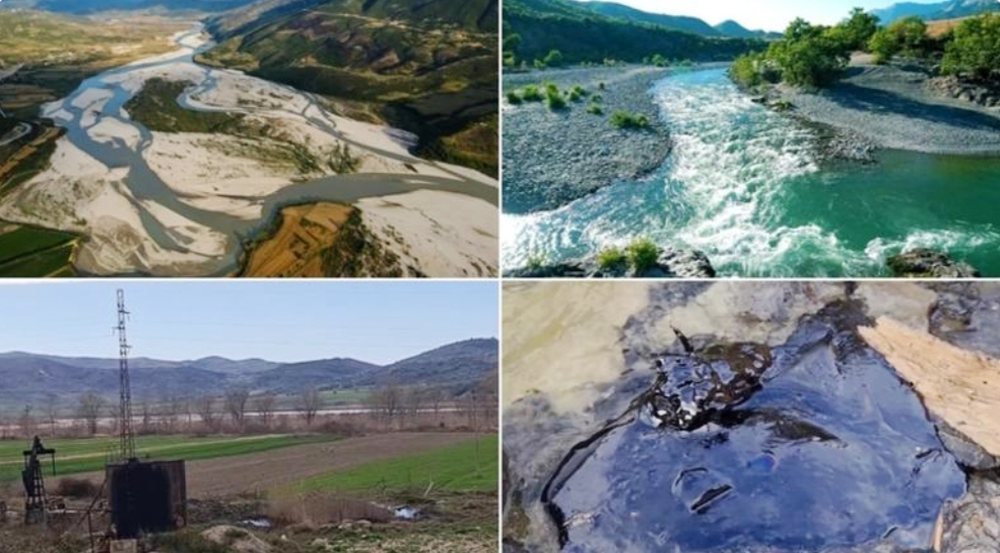
"Europe had a different impression two years ago when it called for the protection of the wild river, but the situation on the ground is different from what is presented on paper," says Daily Telegraph journalist Nick Squires.
A group of foreign journalists from Germany and Italy, together with Albanian journalists and EcoAlbania, undertook a two-day trip to the hottest spots of the Vjosa, to see firsthand the dangers that threaten the wildest river in Europe.
The first stop was right near the river, where for years hydrocarbon waste from the oil wells in Gorrisht was spilled into the river, endangering every living thing and not only.
At the mouth of the Great Stream, as the locals call it, more than water, flowed 'oil sludge' from the wells, up the Gorishte hill, which then ended up in the Vjosa River. This situation has continued for the last 30 years.
Following an inspection conducted on June 30, 3 days after Report TV published the serious environmental crime, the National Environment Agency made a decision ordering Albpetrol to "immediately stop any flow of technological waters mixed with hydrocarbons, coming from the embankments of the deposits or pipelines which then end up in the stream and then in the Vjosa River."
For this, the company was given a deadline of July 30. After this deadline, according to legal procedures, a fine of 2 million will be communicated to it.
In response to a request for information from Report TV, the National Environmental Agency says that the oil spill in the Vjosa occurs because in Gorisht, Albpetrol has old deposits with leaking hydrocarbons; corroded and damaged pipelines that cause leaks, damaged protective structures or even continuous leaks. Such penalties have accompanied Albpetrol's activity over the years but without result.
Two months later, we return to Gorrisht in Selenica together with a group of foreign and local journalists, for whom this is the first encounter with this reality.
What we noticed is that the oil company in the Gorrisht area, Albpetrol, had intervened in cleaning the canal, but this, according to the director of ECO Albania Olsi Nika, is not the right approach, as there is a need for deeper rehabilitation here.
Meanwhile, according to environmentalist from Germany, Leondar Sonten, Albanian institutions act slowly and do not have a clear vision for the management of the National Park.
The second stop was at another hot-spot, where pollution of the Vjosa riverbed continues to be visible. Tar sand and large piles of various waste are dumped into the Vjosa riverbed.
According to Olsi Nika, creating concrete structures with the idea of protecting lands from Vjosa flooding is not the right way, as they are destroyed in two years, while in Albania too, a nature-based solution should be applied, planting saplings and trees with the aim of the final solution of protecting lands from Vjosa erosion.
Environmentalists say that in past years in Selenica there were dense forests on the sides of the river, similar to the forests of the Amazon.
Inside them you will find poplars, alders, plane trees and characteristic riverbank vegetation that served as habitat for various species of birds and other living things. Today, the hand of man has destroyed everything.
The third stop was at the Kuçi springs, where the water intake project is still in the works phase. For environmentalist Kaltrina Hyko, taking water from the Lepusha springs would be a great damage to the area.
The journalists' journey continues to follow the flow of pollution in the Vjosa River.
In Tepelena, Këlcyrë and various fragments thereof we see garbage dumps.
Specifically in Tepelena, since the 1990s, all urban waste from the city and surrounding villages has been deposited on the banks of the Vjosa River.
This issue and the lack of a management plan by municipalities has been extensively covered by Report TV year after year.
In Tepelena, at the former substation, we returned with the group of environmentalists and journalists. Nothing has changed in the last two years, even though Vjosa received the status of National Park.
Olsi Nika, director of "Eco-Albania", who has often raised his voice for the protection of Vjosa, says that he has addressed these issues to the Government but there has been no concrete measure yet.
"Here is one of the waste collection points along the Vjosa that requires an emergency solution. Not only is wastewater discharged into the Vjosa, but water is diverted to several areas, creating numerous problems, which we have assessed and addressed to the government. It is unacceptable," said Nika.
Construction of the Multifunctional Center and Information Stations for the "Vjosa River" National Park in Tepelena and Përmet, worth 5.7 million euros, has begun opposite the waste dump.
Leonard Sonten, project manager at EuroNatur, is holding out hope for the completion of the visitor center, as the sight of the waste will be unacceptable to those who choose to visit the area.
At the end of July, the Minister of Tourism and Environment announced the relocation of this landfill and the implementation of the Integrated Management Plan for the Vjosa River National Park.
"A little further on, there was an unpleasant waste disposal site of the Tepelena municipality, which will be completely relocated and integrated into the rest of the waste management project to make room for a space of about 3,500 square meters at the service of visitors, administration, tourists, researchers, environmental experts, especially those in love with Vjosa who have contributed in various positions in the last 10 years, until today when it is a National Park. With the approval of the national management plan for the Vjosa River National Park, we will also have interventions for the rehabilitation of several points that are the legacy of a past where industrial activities that are currently in a passive stage will have a gradual rehabilitation plan together with the center of Vjosa," said Kumbaro.
If everything is implemented, Vjosa will be saved not only from waste but also from the discharge of Tepelena's wastewater.
On the iconic Beçisht bridge, the discharge from the pipes is clearly visible.
"Here is one of the waste collection points along the Vjosa that requires an emergency solution. Not only is wastewater discharged into the Vjosa, but water is diverted to several areas, creating numerous problems, which we have assessed and addressed to the government. It is unacceptable," said Nika.
Efforts to protect the Vjosa River have a long history that began in 2013 and ended 10 years later, in March 2023.
A year later, in September 2024, the Integrated Management Plan for the Vjosa River National Park was approved, which has a duration until 2033. According to environmentalists, from observations so far, the projects have remained on paper.
At the end of the trip, the journalists resolved the dilemma: is everything they saw and heard about Vjosa in these two years rhetoric or reality?
Daily Telegraph journalist Nick Squires says: "Europe had a different impression two years ago when it called for the protection of the wild river but the situation on the ground is different from what is presented on paper. During this trip I have seen gravel extraction, water diversion to the shore for tourism, sewage flowing into the river, bitumen and crude oil. This is supposed to be a National Park?! It is a great shame and the Albanian Government must take action as soon as possible"./Report TV. Shqiptarja.com



